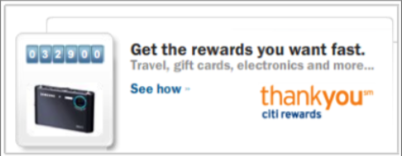Editor’s Note: We welcome Gagan Mehra as our newest contributor. He’s a seasoned ecommerce consultant to large retailers, having worked for a “Big 4” accounting and consulting firm for over ten years. For us, he brings his large-company insights to smaller merchants.
Large ecommerce retailers have spent much time and money in identifying the right set of features that can generate maximum revenue from their sites. Smaller ecommerce players can learn from these retailers and can identify the features that will provide maximum benefit to their sites, too. The following sections highlight some of these key features that can be used by the smaller online businesses.
1. Customer Segmentation
Consumers that come to a site create a ton of information — the orders they have placed, the products they have browsed, the search terms they have used, and their saved addresses. All this can be used to target different customers in different ways. This is known as customer segmentation or personalization. Most large sites analyze their customer base, identify the different customer segments and define the strategy for targeting each segment. This means that different customers might see different pages based on their interaction with the site.
If your site has a variety of different products, it is worth analyzing the customer base and identifying the different segments. This can be done by using survey tools like ForeSee Results, Zoomerang, SurveyMonkey and others. Once that is done, you can work on defining specific content that will serve each segment. There are several tools that can help achieve this. Some of the examples are Monetate and Adobe’s Test&Target extension. These tools can offer a free trial version, to costing a few thousand dollars — depending on the size of your site. Carefully understand your site’s requirement to pick the right tool. The changes should result in a higher conversion rate.
2. Rich Product Content
Customers want to feel comfortable buying a product online and large retailers provide them with rich product content. This includes multiple product images, ability to zoom in and out of each product image, detailed product description and specifications (if applicable), product ratings and reviews, promotional offers for the product and the shipping lead-time.

Product image zoom and pan, from Zappos.com.
A site does not need to offer all of these bells and whistles, but at a minimum can offer its customers multiple product images and the ability to zoom in and out. This will improve the comfort level of the customer before he or she makes a purchase. Customers cannot hold and touch the product, but by providing this feature they can see all the details of the product from different angles. The good thing is that this feature is fairly quick to enable, though it will take some time to take high-resolution pictures of your products from multiple angles, if they are not already available.
There are several freeware packages available that can use all these images to create a 360-degree view of the product. A good example is in an article published on Ecommerce Developer, “Full 360-Degree Product Image Rotation in JavaScript.” The example on the left shows a product that allows users to zoom in on the image and select different images that show the product from different angles.
3. Inventory and Accurate Availability Information
Providing accurate product availability to customers during the shopping process leads to improved customer satisfaction. This feature, though, is not easy to implement and it also does not apply to every retailer. Some retailers do not maintain inventory (e.g. outsourced warehouses) or do not have inventory (e.g. digital downloads) or have products that are manufactured after receiving the order (e.g. made to order products).
Amazon was one of the first sites to share inventory visibility with its customers, at around 1997. These days a lot of large ecommerce sites display available inventory. This helps if your site sells products that are in demand and have limited quantities available. Some sites have taken this a step further and now price the product based on the demand and the available inventory. A few sites also have the availability to get rain checks by allowing customers to join a wait list.
Some smaller sites manage this manually, though, as the size of the product offering grows on the site, it becomes cumbersome and time consuming to do. There are several free and affordable online inventory management solutions that can be used to manage your product offering. Some examples of these are Clearly Inventory, Zoho CRM, and inFlow Inventory.
4. Guided Selling
Guided selling helps consumers get to a targeted list of products based on their answers to a series of questions shown on the site. Buying a computer or a TV on a large site is a good example of how a customer can navigate to the desired products by selecting a series of guided options. This feature works well on sites that have several similar products that can make selecting a single product for purchase difficult; this also works well on sites that sell products bought for gifting. Blue Nile’s “Build Your Own Ring”, below, is a good example of how the guided selling feature works.

Blue Nile’s “Build Your Own Ring”
This feature is not easy to build but smaller retailers can start with having gifting guides and suggestions on the site (e.g. gifts for mom, Easter gifts, and so on).
5. Cross-selling and Up-selling
 Cross-selling and up-selling is the process of guiding a consumer to additional related products with enhanced features and, in most cases, with higher prices and margins. Cross-sell and up-sell is heavily used on large ecommerce sites. This is an easy-to-implement functionality that can result in significant revenue uplift. Related products can be displayed based on static associations. Or if your site supports dynamic rules, then a cross-sell or up-sell can be based on associations like “What other users purchased after seeing this product” to show the recommendations.
Cross-selling and up-selling is the process of guiding a consumer to additional related products with enhanced features and, in most cases, with higher prices and margins. Cross-sell and up-sell is heavily used on large ecommerce sites. This is an easy-to-implement functionality that can result in significant revenue uplift. Related products can be displayed based on static associations. Or if your site supports dynamic rules, then a cross-sell or up-sell can be based on associations like “What other users purchased after seeing this product” to show the recommendations.
There are several hosted providers that can help create cross-sell and up-sell and the functionality can be up and running within a few days. The Filter, Directed Edge and ChoiceStream are a few examples of the hosted cross-sell and up-sell providers. Many shopping carts also provide the functionality built-in, or through a plug-in.
6. Ease of Returns
When building an ecommerce site, returns is usually the last thing a merchant thinks of. But the ease in which a product can be returned has become a unique differentiator to help convert consumers who just browse the site into shoppers. For example, Zappos changed the customer mindset towards purchasing shoes online by simplifying the returns process.
The good thing is that returns is a relatively straightforward process to implement, in most cases, and it helps consumers make decisions when they cannot choose between multiple sites or are concerned about “getting stuck” after buying something online.
The best way to design a return policy is to put yourself in your shoppers’ position and see what kind of policy would make sense to them. If you can afford free return shipping, that would help differentiate your site from the others. Customers do not like paying for shipping and especially for return shipping. At a minimum, you should enable functionality on your site to print a return label for the product the customer wants to return. This has become fairly standard and is now available on almost every large retailer’s site.
7. Loyalty Programs

Example of Citibank’s loyalty rewards program.
Large online retailers reward their customers by offering them special discounts, financing options and reward points that can be redeemed for free products. If your site has a lot of repeat customers, then this is one of the key features to enable. This feature helps build a relationship with the customer by making them feel a part of the site.
Also, there are several third-party loyalty programs — Smart Button, Epsilon, Innoviti and others — that can work with your site. Loyalty programs can also be used as an additional revenue stream by selling additional loyalty points to shoppers.
8. Address Verification
Address verification is done on almost every large ecommerce site. It works behind the scenes, transparent to the end customer. This is done by either calling a third-party service or having a component that takes an address (mostly shipping address) and compares it against a standard address database — such as the U.S. Postal Service — and returns a verified address that exists in the database. The data is also formatted to align with the needs of the shipping carrier.
This small component results in multiple benefits. It reduces the fees for correcting addresses that are charged by shipping carriers; it minimizes the number of returned orders due to unknown addresses; and, most importantly, it delivers customer orders to the right address the first time. And, as we all know, satisfied customers lead to repeat business and increased referrals.
9. Gift Cards
Gift cards provide retailers the ability to provide customers additional flexibility when making gift purchases. Gift cards typically are purchased with set amounts of value to be redeemed later to make purchases through the retailer.
 Gift cards are an easy way to increase revenue without spending significant time and money in overhauling the existing ecommerce site. Large retailers use gift cards very effectively to increase revenue, especially during the holiday season. They are also used to target last-minute and undecided shoppers. Moreover, retailers that fully leverage the functionality of gift cards enable customers to combine gift cards as a payment method along with the other supported payment methods like credit cards or PayPal.
Gift cards are an easy way to increase revenue without spending significant time and money in overhauling the existing ecommerce site. Large retailers use gift cards very effectively to increase revenue, especially during the holiday season. They are also used to target last-minute and undecided shoppers. Moreover, retailers that fully leverage the functionality of gift cards enable customers to combine gift cards as a payment method along with the other supported payment methods like credit cards or PayPal.
Smaller retailers can easily leverage off-the-shelf solutions to deliver gift card functionality to their customers. But they must ensure that they have the capability and the understanding to manage the end-to-end fulfillment process for this highly desirable customer functionality.
10. Payment Methods
It’s now common to offer customers multiple ways to pay for their purchases. A retailer does not want to lose business because he or she did not support a customer’s preferred payment method. Smaller retailers need to understand the requirements of the consumers that are accessing their sites and then enable the desired payment methods based on those findings.

TigerDirect.com offers many payment methods.
Credit cards, PayPal, Google Checkout, and Bill Me Later are the most common payment method options on large ecommerce sites. These methods do not take significant effort to enable, but provide site-flexibility and convenience for customers that are increasingly demanding alternative payment methods.
Note, however, that offering too many payment methods will confuse the consumer. Online sellers need to balance between meeting customer requirements and supporting multiple payment methods.




